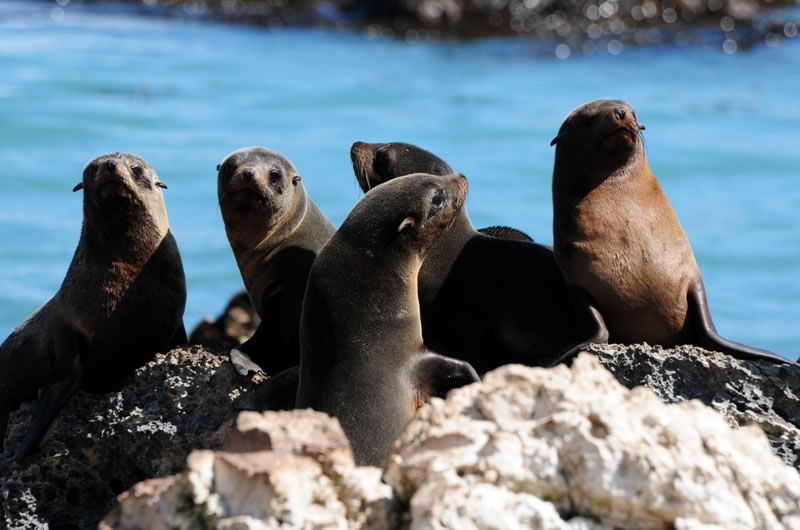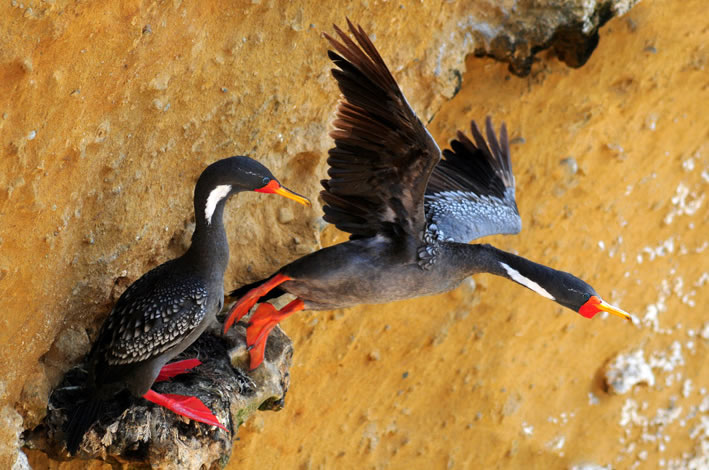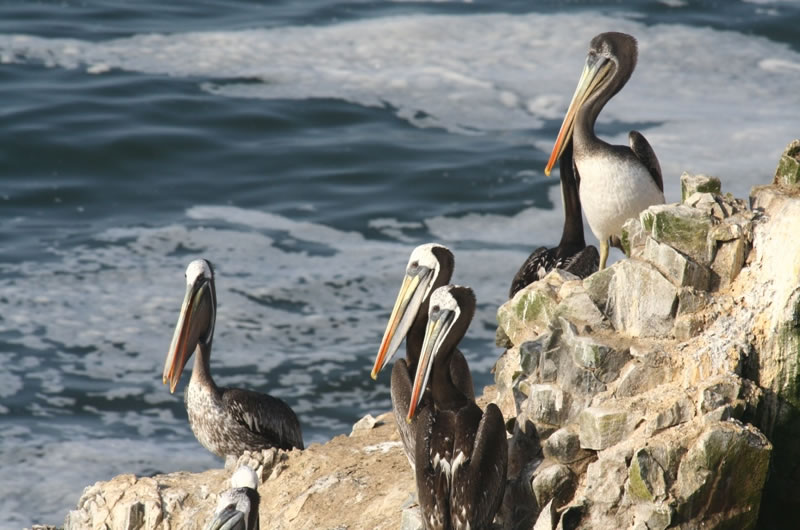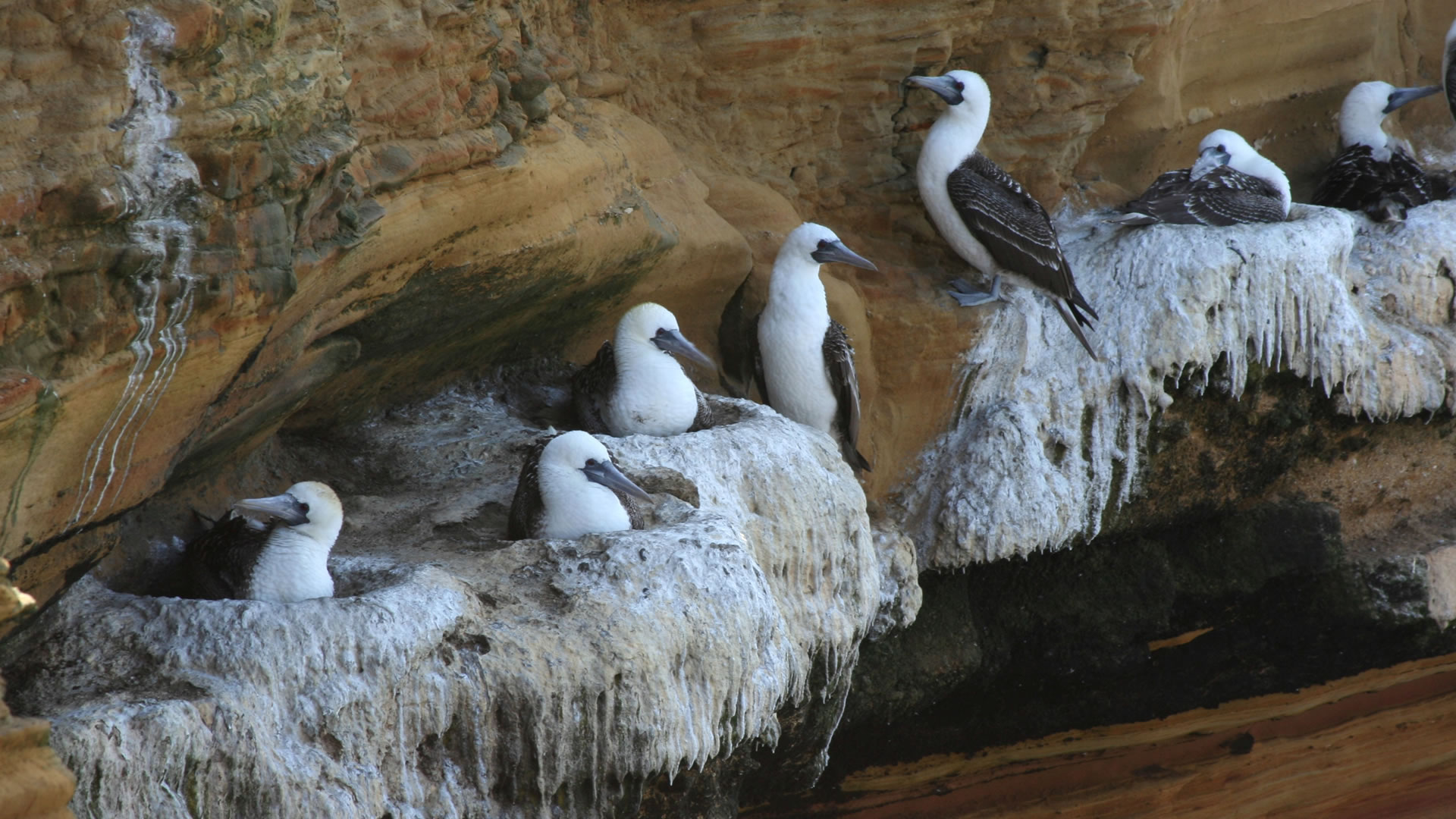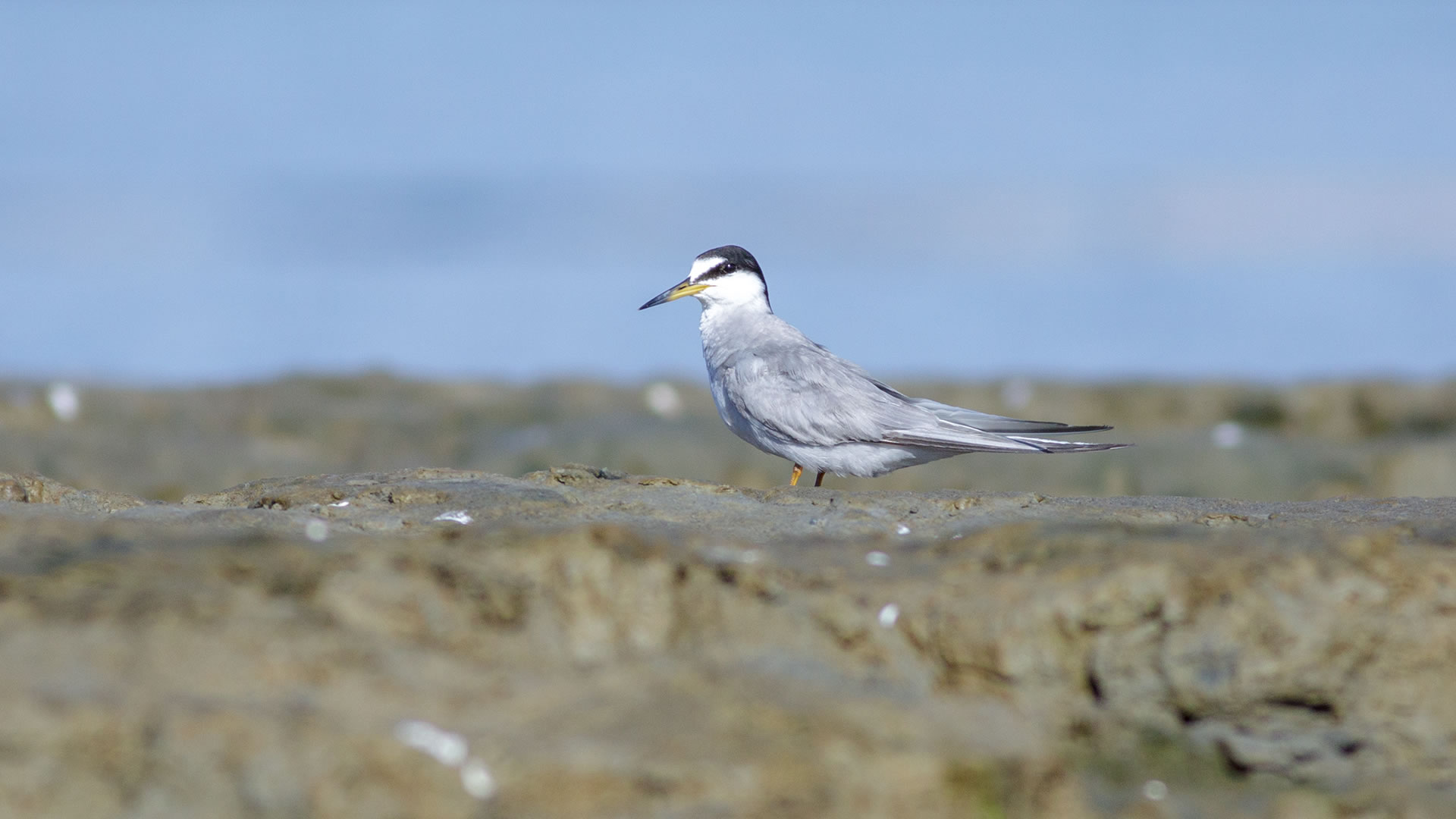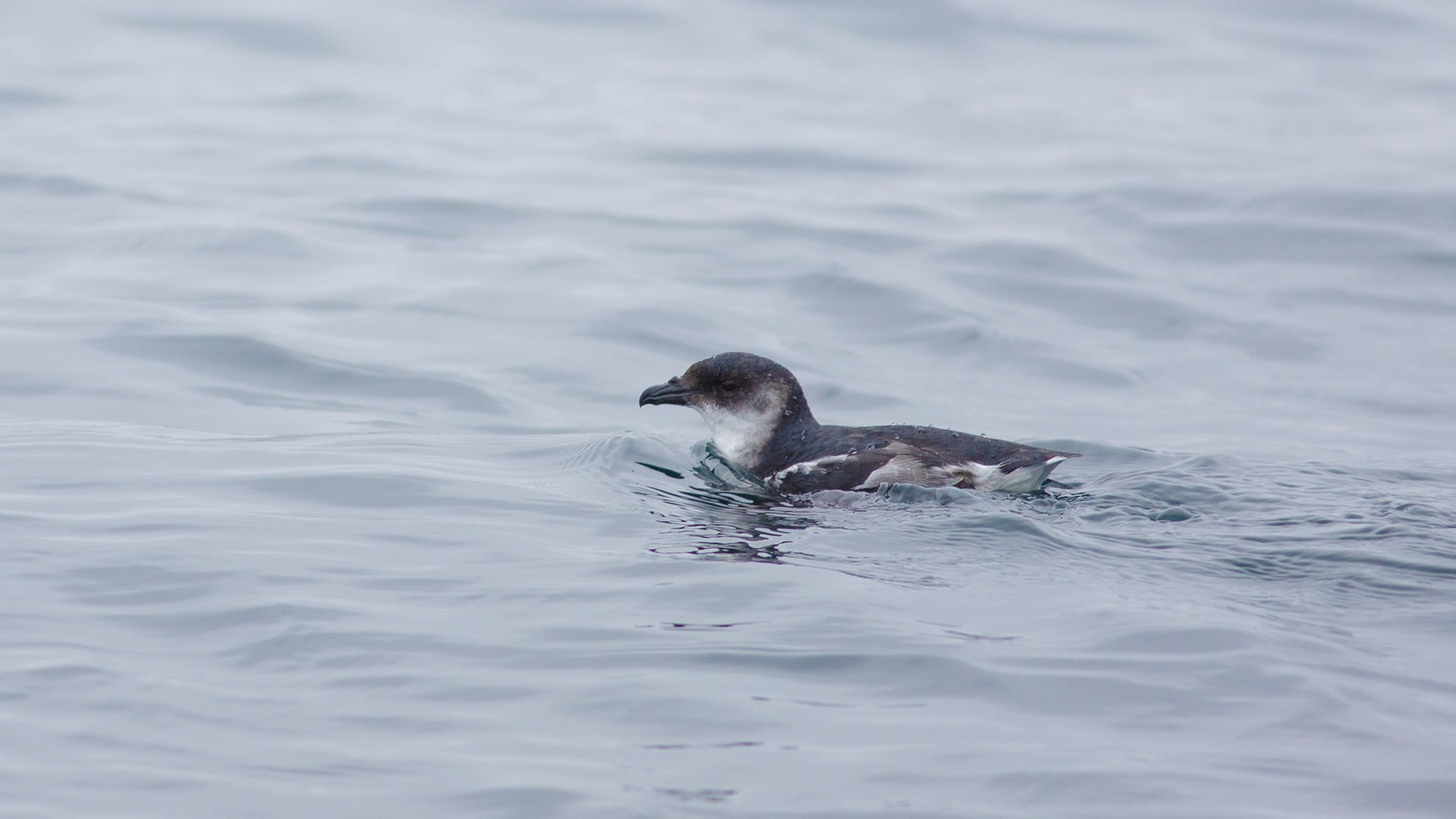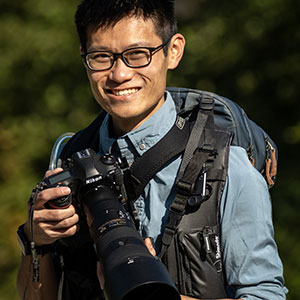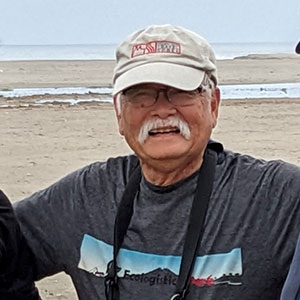Birding near Lima: Paracas National Reserve
The Paracas National Reserve is located 250 km (155 miles) south of Lima, and is easily accessible via the Panamerican Highway. The reserve stretches over 335,000 hectares. Paracas is one of two protected areas that preserves Peru’s coastal marine ecosystems. Thanks to the Humboldt Current, a deep upwelling of cold, nutrient-rich water sweeping northward along the Peruvian coast, the reserve support an abundant and varied population of sea and bird life. Paracas National Reserve is known as one of the most biologically productive marine areas in the world, serving as a breeding ground for fishes, marine mammals and birds. Paracas is home of many endangered and threatened species like the South American Fur Seal, Green and Leatherback Sea Turtles and the elusive Marine Otter.
Day 1
Early morning visit to the Paracas Bay where we will scan the mudflats looking for shorebirds like Snowy Plover, Semipalmated Plover, Western, Least and Semipalmated Sandpipers, Ruddy Turnstones and Sanderlings. Then we will visit the local museum inside the reserve, around this area the endemic Coastal Miner can be seen. A short walk from this point will allow us to observe the Chilean Flamingos that feed close to the shore during this time of the year. Black Skimmers, American Oystercatchers and White cheeked Pintails can also be seen in this area. After a short driving we will arrive to the Sequion Bay where the endangered Peruvian Tern can be found year-round.
Peruvian Bobby @Guillermo Knell
Around midday we will drive towards the charming fishing town of Lagunillas. We will scan the rock formations of this area to observe the endemic Surf Cinclodes that usually feed on the intertidal zone. Migratory Surfbirds can also be seen around here together with Blackish Oystercatchers.
After a lunch on the town we will visit the “La Mina” beach, here we can see the spectacular Inca Terns resting on the rocks after a long day at sea. Gray Gulls and also Red-legged Cormorants can be seen in this area. Depending on the time we might try to walk towards an area where the endangered Marine Otters can be se
Peruvian Tern @Jean Paul Perret
Day 2
We will start the day with a visit to the Ballestas Islands, often referred as “Peru’s Galapagos”. On the way to the Ballestas, the boat will stop briefly to view “El Candelabro”, a giant, candelabrum-shaped drawing etched on the sand hills overlooking the Bay of Paracas.
The volcanic islands are well known for their extraordinary diversity of marine fauna. In the waters, inquisitive South American Sea Lions often play around the boats, while at the islands we will be overwhelmed by hundreds of thousands of seabirds including Guanay Cormorants, Red-legged Cormorants, Peruvian Boobys, Inca Terns, Peruvian Pelicans and the endangered Humboldt Penguins. On the way back to the port we will scan the open waters for pelagic species like Peruvian Diving-Petrel, Markham’s Storm-Petrel and Sooty Shearwaters.
Peruvian-Diving Petrel @Jean Paul Perret
Weather
The Peruvian coast is located in the middle of one of the driest areas in the world, the Atacama desert. Despite that, during the winter months (June to November) the atmosphere is saturated with high levels of humidity due to the condensation caused by the cold Humboldt current. Rains are very uncommon here (except during “El Nino” events), but drizzle is present almost everyday during the winter months. Temperatures ranges from 13°C (55°F) during the winter from June to November, to 30°C (86°F) during the austral summer (December to March).
Recommendations
- During the winter months (June to November) dress in layers, a windproof jacket, fleece jacket and a T-shirt or a long sleeve shirt is a good combination. For the boat trip a windproof jacket is a must during winter and desirable even in the summer months as the combination of strong winds and cold waters creates wind chill conditions.
- Between November and May sunny days are very common. Bring something to cover
your head as the UV factor along the Peruvian coast is very high. Also a sunblock with good UV protection is important. - If you suffer from any medical condition that requires special attention please let us beforehand.
Prices
1 PAX $1284 per person
2 PAX $699 per person
3 PAX $540 per person
4 PAX $434 per person
5 PAX $413 per person
6 PAX $363 per person
*There is an additional fee of US$ 20 per person for the optional visit to the Ventanilla Marshes.
Prices include
- Private vehicle and driver during the duration of the tour.
- Professional english speaking birding guide.
- Entrance tickets to the Paracas National Reserve.
- Boat tour to Ballestas Islands.
- One night at Hotel Emancipador.
- Lunch and Dinner.
Prices does not include
- Tips.




